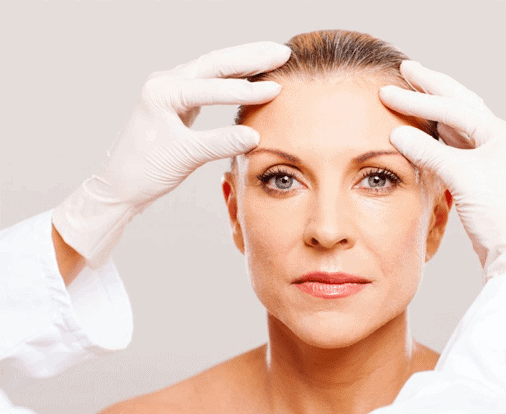Minimising Scarring After Cosmetic Surgery: A Step-by-Step Guide
Scarring is an inevitable part of the healing process after any kind of surgery. It occurs when the body produces collagen to heal a wound and forms a fibrous tissue on the skin surface. While scarring can be seen as a sign of strength and resilience, it can also be unsightly and have a negative effect on self-esteem. This is especially true in cases of cosmetic surgery, where scars can be more visible due to their location on the face or body.
Definition of Scarring
A scar is an area of fibrous tissue that replaces normal skin after injury or trauma. It typically appears red or pink at first, then fades over time to become paler than surrounding skin. The size, shape, and texture of the scar will depend on the severity and location of the injury as well as individual factors such as age, genetics, and skin type.
Types of Scars
The two main types of scars are hypertrophic and keloid scars. Hypertrophic scars are raised above the surface of the skin and may appear red or purple in colour. They tend to fade over time but may remain raised for many years. Keloid scars are similar but usually larger than hypertrophic scars and may extend beyond the boundaries of the original wound.
Causes of Scarring
Scarring can occur from any kind of surgical procedure, including cosmetic surgery. Other causes include burns, acne, cuts, scrapes, insect bites, vaccinations, or any other form of trauma to the skin that causes damage to its layers. In some cases genetic factors may also contribute to scarring after surgery or other forms of trauma.
Steps to Minimise Scarring After Cosmetic Surgery
Scarring is a natural part of the healing process after any type of surgery, including cosmetic procedures. While some amount of scarring is inevitable, there are steps that can be taken to minimise the appearance and impact of scars. This article will discuss the definition, types, and causes of scarring after cosmetic surgery, as well as provide an overview of steps to minimise scarring.
Definition of Scarring
Scarring occurs when collagen is produced in response to tissue damage caused by surgery. Collagen is a protein that helps the skin heal and rebuild itself but can cause a raised or discoloured area on the skin where it was produced. Scarring is a normal part of the healing process but can be unsightly and uncomfortable for some people.
Types of Scars
There are several different types of scars that can occur after cosmetic surgery. Hypertrophic scars are raised, red areas that form around wounds and can be itchy or painful. Keloid scars are similar but tend to grow beyond the boundaries of the wound and may require treatment with injections or medications. Contracture scars occur after skin has been burned or injured and cause tightness or loss of movement in the affected area. Finally, atrophic scars are sunken or pitted areas that may appear due to loss of tissue during healing.
Causes of Scarring
The most common cause of scarring after cosmetic surgery is poor wound care or hygiene during recovery. Other factors such as age, genetics, ethnicity, smoking, nutrition, and infection can also contribute to excessive scarring. It’s important to note that some individuals may be more prone to developing certain types of scars than others due to their individual characteristics.
Stop Smoking or Vaping
Smoking or vaping can slow down the healing process and increase your risk for developing hypertrophic and keloid scars after cosmetic surgery. If you’re a smoker or vaper, it’s important to quit before undergoing any type of surgical procedure in order to reduce your risk for developing these types of scars. Additionally, nicotine patches should not be used while recovering from surgery as they can further delay healing time and increase your risk for developing visible scarring.
Increase Protein Intake
Protein plays an essential role in wound healing as it helps build new tissue and speed up recovery time after surgery. Increasing your intake of lean proteins such as chicken, fish, eggs, beans, nuts, seeds, tofu, tempeh, quinoa etc., can help ensure adequate protein levels throughout recovery which will help reduce your risk for developing excessive scarring after cosmetic surgery. Additionally, consuming foods rich in vitamin C such as citrus fruits (oranges & lemons), bell peppers & broccoli will also aid in promoting healthy wound healing by helping boost collagen production which will further reduce your risk for developing visible scarring post-surgery.
Proper Wound Care and Hygiene
It’s important to follow all post-operative instructions provided by your doctor regarding wound care and hygiene in order to reduce your risk for developing visible scarring after cosmetic surgery. This includes washing the area with mild soap & water daily (as directed by your doctor) and avoiding activities such as swimming & hot tubs until fully healed (usually 4-6 weeks). Additionally applying sunscreen regularly (SPF 30+) when exposed to direct sunlight will help prevent discolouration/darkening from occurring on newly healed skin which may further reduce the appearance of any existing scarring post-surgery.
Use Silicone Products
Silicone products such as gels & sheets have been proven effective at reducing the appearance & discomfort associated with hypertrophic & keloid scars post-surgery when used consistently over a period 8-12 weeks following initial treatment/surgery date(s). These products work by forming an invisible layer on top of newly formed scar tissue which helps soften & flatten existing raised areas while also preventing moisture loss from occurring which helps promote healthy wound healing & reduce itchiness/discomfort associated with these types of scars.*
Follow Postoperative Instructions
It’s important to follow all postoperative instructions provided by your doctor in order to minimise potential complications associated with any type of surgical procedure including those related to scar formation/appearance post-surgery (e.g., avoiding direct sunlight/sun exposure; abstaining from smoking/vaping; using silicone products etc.). Following these instructions carefully will help ensure optimal results with minimal visible scar formation following any type(s)of cosmetic procedure(s).
Conclusion
To minimise potential visible scar formation following any type(s)of cosmetic procedure(s), it’s important to stop smoking/vaping prior to undergoing any type(s)of surgical procedure(s); increase protein intake; practice proper wound care & hygiene; use silicone products; & follow all postoperative instructions provided by one’s physician closely throughout recovery period(s).
Call To Action
Taking proactive steps before undergoing any type(s)of surgical procedure(s)can significantly improve one’s chances for achieving optimal results with minimal visible scar formation following any type(s)of cosmetic procedure(s). Talk with your doctor today about what steps you should take in order achieve optimal results with minimal visible scar formation following any type(s)of cosmetic procedure(s).
Conclusion
Scarring is a common side effect of cosmetic surgery that can be minimised through following the right steps. Smoking or vaping, increasing protein intake, proper wound care and hygiene, using silicone products and following postoperative instructions are all important steps in reducing scarring after cosmetic surgery.
Summary of Steps to Minimise Scarring After Cosmetic Surgery
Firstly, it is essential to stop smoking or vaping as this can have a negative impact on the healing process. Secondly, increasing protein intake can help speed up the healing process and reduce scarring. Thirdly, proper wound care and hygiene is necessary to reduce infection and prevent further scarring. Fourthly, applying silicone products to the wound can help reduce scars. Finally, it is important to follow postoperative instructions provided by your doctor for optimal results.
These steps are all key in reducing scarring after cosmetic surgery and providing you with better results. By following these simple steps you can minimise potential scarring and achieve a successful outcome from your cosmetic procedure.
Smoking, Protein, Wound care, Silicone, Postoperative instructions help minimise scarring after cosmetic surgery.
Call to Action
Taking the proper steps to minimise scarring after cosmetic surgery is essential for achieving the desired results. This includes stopping smoking or vaping, increasing protein intake, proper wound care and hygiene, using silicone products, and following postoperative instructions.
Stop Smoking or Vaping
Quitting smoking or vaping is a key step in preventing scarring after cosmetic surgery. Nicotine constricts blood vessels which can impede healing and increase the likelihood of scarring.
Increase Protein Intake
Increasing your protein intake before and after surgery helps your body heal properly and reduce the risk of scarring. Eating lean proteins such as fish, poultry, beans, nuts, and eggs are good sources of protein that help promote healing.
Proper Wound Care and Hygiene
It is important to keep the wound area clean and dry to prevent infection and minimize scarring. After showering or bathing, gently pat the incision area dry with a soft towel. Applying an antibiotic ointment can also help reduce the risk of infection.
Use Silicone Products
Silicone-based products such as gels, sheets, or creams can be used on the surgical site to help reduce redness, itching, pain, and inflammation that can lead to scarring.
Follow Postoperative Instructions
Following your doctor’s postoperative instructions is a crucial part of preventing scarring after cosmetic surgery. These instructions may include taking medications as prescribed, avoiding strenuous activities that could cause further injury to the surgical site, avoiding direct sunlight exposure on the area for at least six months, and wearing compression garments when recommended by your doctor.
By taking these simple steps you can minimise your risk of developing scars from cosmetic surgery procedures. Taking these steps will ensure you get the best possible results from your procedure while reducing potential side effects such as scarring.
Quit smoking/vaping, increase protein intake, proper wound care/hygiene, use silicone products, follow postoperative instructions to reduce scarring risk after cosmetic surgery.





